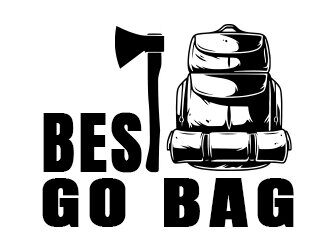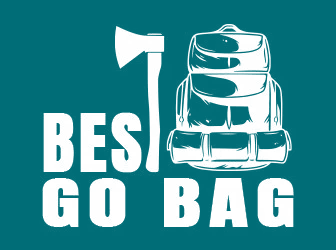How To Prevent Forest Fires In 3 Steps
Forests are undeniably amazing places that cover almost a third of our beautiful Earth’s land — including over 700 million acres in the U.S.
Home to a wide variety of animals and plants, our forests are extremely valuable. Not only are they places of allure and outdoor fun, but we also rely on trees for fuel, raw materials, medicine, and more. Even more importantly, trees and plants that live in the forest make sure that our planet’s temperature is liveable and that we all have enough oxygen to breathe.
Needless to say, our forests are important! And it’s crucial to do your part in preventing forest fires to keep them healthy, strong, and thriving.
Not sure how to prevent forest fires? Don’t worry — Stealth Angel Survival has got your back!
Read on to learn everything you need to know about forest fire prevention.
But First, Here Are a Few Things You Should Know
Wildfires can destroy millions of acres of land at terrifyingly fast speeds, engulfing everything in their paths. These wild rolling flames have the ability to travel up to 14 miles an hour, which converts to about a four-minute-mile pace and can overtake life in a matter of minutes.
Forest fires, specifically, are large uncontrolled fires that take place in — you guessed it — the forest. While some forest fires are started by natural causes, such as lightning, most wildfires in the U.S. are due to human error. This can be carelessness, such as not properly putting out a campfire or dropping a lit cigarette.
What’s more, it takes an average of two to four years after a wildfire before reforestation efforts can begin. Young saplings simply can’t survive until the soil has begun to naturally replenish, can absorb water, and can support new life. It also takes quite a bit of time to mobilize resources for reforestation.
Simply put, it can take up to four years of rehab to restore a forest that was burnt to the ground due to a single second of carelessness.
How Do Forest Fires Spread?
Believe it or not, there are many factors that contribute to how a wildfire will spread in the forest and how intense the fire will be.
They include:
- Fuel:
Fires require fuel to burn. Now, the type of fuel will impact how quickly the fire will spread as well as how intense it will be. With that being said, forests have many plants at different levels. So, the fuels in the forest will be at different levels, too.
- Aerials fuels: don’t touch the ground. They are at least one meter above the ground, so aerial fuels could be leaves, moss, branches, bark, and high brush.
- Surface fuels: are on the ground. Here, you’ll find logs, stumps, and bushes, as well as fallen leaves, branches, cones, and needles.
- Ground fuels: are anything that will burn below the surface fuels. This could be rotting branches or roots.
- Ground fires burn the ground fuels. These fires typically don’t have too much flame— they smolder. Surface fires quickly burn the surface fuels, and crown fires burn the aerial fuels.
Of the three types of forest fires, crown fires are the most destructive as they can spread quickly from tree to tree, causing immense destruction in a matter of minutes.
- Weather:
The weather plays a huge role in how a fire will spread. Forest fires are much more likely to start and spread during droughts when plants are bone-dry. Add strong winds to the equation, and you’ve got a recipe for destruction. The temperature and humidity will also impact how well a fire will spread. Wildfires thrive in hot and dry temps.
- Topography:
The topography is the shape and features of the forest where the fire is burning. Fire tends to move much faster uphill, so if the forest has many steep slopes or is particularly hilly, you can expect a fire to spread quickly.
OK — How Are Forest Fires Stopped?
Fire requires three things to burn —oxygen, fuel, and heat.
Commonly referred to as the “fire triangle,” take any of these three elements away, and a fire can’t burn. So, how are forest fires stopped, you ask? Simply put, brave firefighters battle these deathly infernos by depriving them of one or more of the three elements.
One traditional method is to douse existing fires with water and spray fire retardants. Firefighters also sometimes work in teams to clear vegetation from the land around a fire to contain and eventually starve it of fuel.
In addition, firefighters may also employ controlled burning, creating what’s called “backfires” to stop a wildfire. This common method involves fighting fire with fire and works by setting a controlled fire to remove undergrowth, brush, and litter from a forest, depriving an otherwise dangerous wildfire of fuel.
Do Your Part: 3 Easy Steps To Prevent Forest Fires
Remember, only YOU are responsible for the fires YOU start! Be careful to only start a fire when the conditions allow the fire to burn safely, and don’t forget to extinguish it correctly. If you cause a forest fire — regardless of being an accident — you may be held solely responsible for the cost of putting out the fire as well as face jail time, which could end up costing you hundreds of thousands of dollars.
If you’re planning a camping trip with the kiddos to enjoy the great outdoors, chances are you’re going to build a fire to keep warm (and roast marshmallows, of course!). Do your part and educate yourself on forest fire prevention beforehand.
Follow these easy steps to keep preventable fires at bay:
Step #1: Choose a Campsite Wisely and Watch the Weather
When choosing your camping site, do your best to build your camp next to a water source that is sheltered from the wind. Also, be sure to pay extra close attention to the weather and drought conditions. If it’s a particularly hot day with very little humidity, it might be best to skip the campfire.
Step #2: Build a Safe Campfire
Many folks love to go camping and enjoy the warmth and light that comes from a crackling campfire, but your seemingly harmless campfire can quickly cause wildfires if you don’t build it properly.
To properly build a campfire, make sure you:
- Select a flat, open location that is far away from flammable materials such as brush, logs, or decaying leaves.
- Scrape away leaves, grass, and needles down to the mineral soil.
- Cut your wood in short lengths, and pile it within the cleared area before lighting the fire.
- Never leave your fire unattended.
Step #3: Douse Your Campfire Until It’s Cold to the Touch
Done with your campfire? Great! Don’t leave it unattended until it’s completely out. To properly put out a wood-burning fire pit, allow the wood to completely burn down. Then, dump a bucket of H2O on top of it and grab your handy-handy shovel to stir the ashes. Pour more water over the top of the campfire before stirring the ashes for a final time.
Repeat this process until:
- The ashes don’t hiss.
- The ashes are cold to the touch.
- No more smoke comes from the ashes.
Watch How You Get Lit
These three steps can make all the difference between a totally preventable wildfire that consumes everything in its path, leading to mass destruction and a wonderful time enjoying Mother Nature in the forest.
While our three tips listed above should definitely help to prevent forest fires, accidents do happen. If you notice a fire starting to get out of control, immediately call 9-1-1 or the appropriate authority and ask for help. The sooner you can get help over to you, the better the chances of the fire not becoming a larger problem.
Planning a camping trip? Don’t forget to stock up on all the camping essentials like our Stainless Steel Square Wood Burning Stove to safely whip up a tasty meal and first aid supplies in the event of an emergency.
As the premier site to find essential outdoors, camping, hiking adventure, and survival equipment, you can count on us to have everything you need to enjoy Mother Nature — safely.
Sources:
Suppression | US Dept. of Interior.


